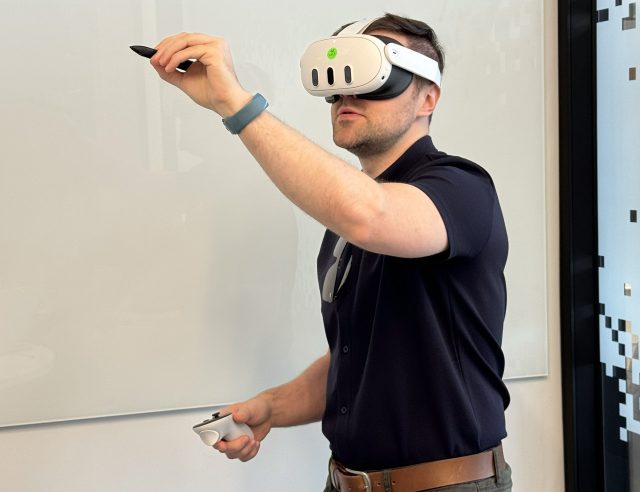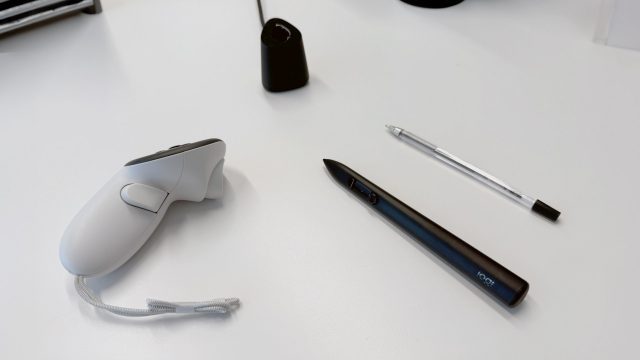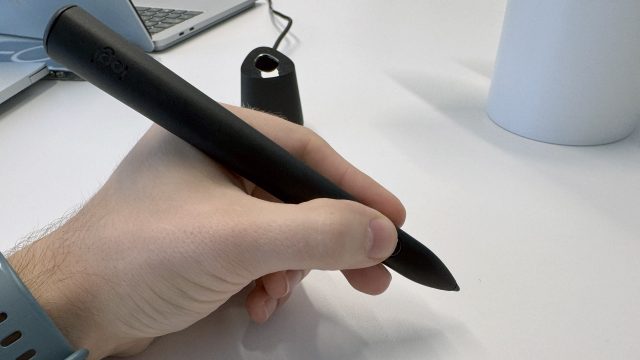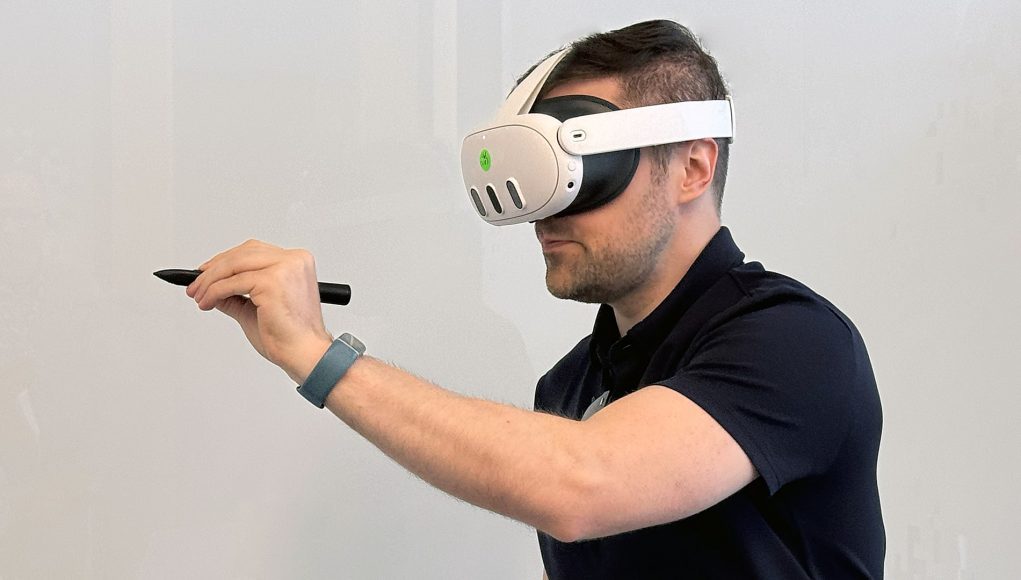Over the last decade I’ve reported on and tested many different VR styluses, but none of them have actually caught on. But the new MX Ink stylus for Quest stands a real chance at legitimizing the VR stylus as a whole, thanks to its thoughtful design, strong lineup of launch apps, and tight integration with Quest’s software.
This week Logitech announced MX Ink, an officially endorsed ‘Made for Meta’ stylus supporting Quest 2 and Quest 3 (see the full announcement details here). It’s the first time Meta has allowed any other company to harness its tracking technology in a third-party product. That alone makes MX Ink unique, but there’s more that makes this the device that could legitimize VR styluses as a whole.
The first styluses are thought to have been invented five millennia ago. And there’s a reason they’ve stuck with humanity ever since: a stylus amplifies the precision with which we can point. While that seems rather simple, it makes information tasks like writing, drawing, calculating, and designing significantly more practical and useful than using our fingers alone.
So it’s not surprising that we’ve seen many attempts to bring a VR stylus to life.
Just to name a few: in 2017 an enterprising developer hacked together a chunky prototype using a Vive Tracker and a pressure-sensitive stylus tip; in 2018 a company called Massless designed its own prototype VR stylus that it hoped to bring to market; even Wacom has been toying with the idea. Hell, Logitech already made a VR stylus back in 2019… but at $750, it’s no wonder it never made it to general availability.
So what could be different about Logitech’s new MX Ink? Well for one, the price is significantly more palatable than what’s come before. The $130 price point is a pretty easy sell for professionals for whom the added precision of a stylus could actually improve their workflow.
Logitech is also smartly launching some ‘nice to have’ extras for those who are really serious about making the MX Ink part of their workflow.
There’s the Inkwell dock which, for only another $40, gives you an easy place to store and charge the stylus so it’s ready for your next use. And there’s the MX Mat, for $50, which Logitech pitches as the ideal surface to make it feel like you’re drawing on a paper-like material when using the stylus.

But more importantly than price or accessories is the first-party integration with Meta and the strong lineup of supported software out of the gate.
Logitech worked directly with Meta, not only to adopt Quest’s tracking technology, but also to build the stylus’ software experience right into Horizon OS. Pairing the MX Ink is just like pairing one of the headset’s own controllers, without any extra hardware or software needed. Even the stylus’ settings—which let you control things like hand selection, button bindings, and pressure curves—are baked right into the system’s own Settings menu.
It’s even got a proper ‘Meta’ button on the end (where the eraser would be), making it easy to pull up the headset’s menu.
And then there’s the strong lineup of software that will work right out of the gate. Logitech has locked in a solid swath of VR design apps for MX Ink support:
- Adobe Substance Modeler
- Gravity Sketch
- PaintingVR
- Arkio
- Engage
- OpenBrush
- GestureVR
- ShapesXR
- Elucis by RealizeMedical
If Logitech plays its cards right, MX Ink could be the first VR stylus that really sticks the landing. So needless to say, I was intrigued to try it.
Hands-on With Logitech MX Ink for Quest

Last week I swung by Logitech’s San Jose, CA office to check out an early version of the stylus for myself. Compared to the company’s last VR stylus, the MX Ink is significantly more compact. Even so, I was impressed with the tracking.

Even with my hand covering a significant area of the stylus, there were seemingly enough hidden IR LEDs hiding under the stylus’ shell to provide continuous tracking no matter how I held or twisted the stylus. The company said it even put IR LEDs toward the tip of the MX Ink so it could be held like a wand or a pallet knife.
Logitech says the stylus is ‘as accurate as the Quest controllers’—but that doesn’t mean it can’t be more precise. Using a stylus as a pointing device means you can use your dexterous fingers to manipulate the input position in a very fine way; far more so than twisting your wrist alone (which is what primarily drives fine controller motion).
That was obvious while I was using the MX Ink to draw and sketch directly onto a real table in front of me. The pressure sensitive tip also made it feel natural to vary line width as needed.

I also tried using the MX Ink stylus against a whiteboard while using Quest 3’s mixed reality view. The tight latency and accuracy of the stylus really made it feel like I was leaving marks on the whiteboard. It was a whole layer of immersion that I wasn’t expecting to feel while trying the stylus.
This sense of actually leaving real marks on the whiteboard only made the next part even more mind-bending… I could lift the stylus from the surface while holding the button on the barrel and extend my drawing into the third dimension. Watching my strokes literally leap off the page like this was just plain fun.
While pressing the MX Ink against a real surface, the tip communicates the amount of pressure to the headset and thus changes the thickness of the line you draw. But when you’re using the stylus to draw in 3D, suddenly there’s no way for the system to know how much pressure you’re using, right? Actually, no; Logitech smartly made the button on the barrel of the stylus pressure sensitive itself, so you can squeeze softer or harder to define the width of brush strokes, even when you’re drawing in the air.
The MX Ink even includes a haptic engine for feedback. So even if you’re using it against a virtual surface, the stylus can let you know when you’re touching the canvas.
– – — – –
I’m impressed with the level of thoughtfulness in the design of MX Ink. It’s clear the company has carried over some important lessons learned from its previous experiments with VR styluses.
MX Ink has a reasonable price point, direct integration with the most popular headsets on the market, and a strong lineup of supporting apps. Logitech is giving the VR stylus—as a category—its best chance yet at really catching on.
The essential pieces are in place. The thing that will make or break this product is now likely down to how well integrated it is into the workflow of key applications. My understanding is that developers have a huge range of control over exactly how their applications will handle MX Ink. Half-hearted implementations could kill what otherwise looks like a strong product.
With MX Ink not due to launch until September, there’s time still for applications to tighten up their implementations, so we’ll have to wait to see how it all comes together.







